North Arabian Highland Shrublands
The ecoregion’s land area is provided in units of 1,000 hectares. The conservation target is the Global Safety Net (GSN1) area for the given ecoregion. The protection level indicates the percentage of the GSN goal that is currently protected on a scale of 0-10. N/A means data is not available at this time.
Bioregion: Red Sea, Arabian Deserts & Salt Marshes (PA26)
Realm: Southern Eurasia
Ecoregion Size (1000 ha):
811
Ecoregion ID:
832
Conservation Target:
72%
Protection Level:
0
States: Saudi Arabia
Striking pink granite rocks are punctuated with ephemeral pools and intermontane plains in this ecoregion, which is one of the greenest areas in northern Arabia. The North Arabian Highland Shrublands ecoregion is an important genetic resource, harboring relict Pleistocene species which have gone extinct with increasing temperatures across the rest of the Arabian Peninsula. Rugged, botanically rich slopes are populated with Nubian ibex, Arabian hare, and caracal, whilst thousands of swift, lark, wheatear, and falcon pass overhead during their annual migration.
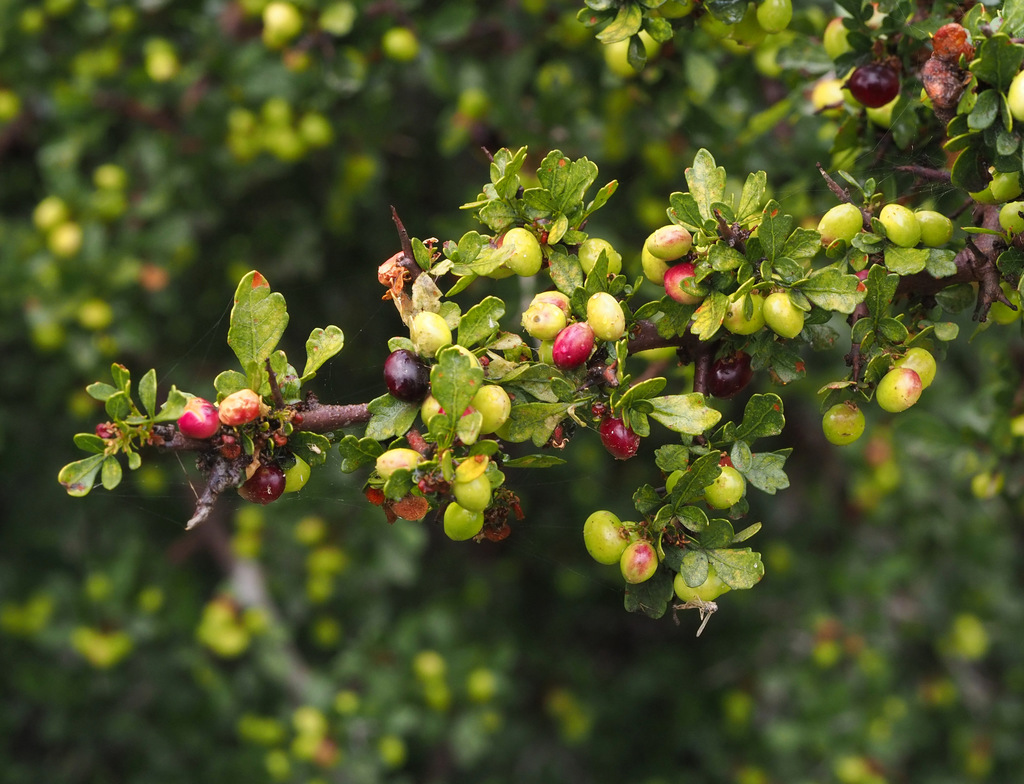
The flagship species of the North Arabian Highland Shrublands ecoregion is Searsia tripartita. Image credit: Creative Commons
This discontinuous ecoregion is situated in Saudi Arabia’s western Ha’il region. Neighbouring the western edge of the great Nafud sand desert, it encompasses the Shammar mountain range and surrounding patches of lowland gravel desert. Jabal Aja and Jabal Salma are the major sub-ranges, taking their names from two historic star-crossed lovers, with peaks on either side of Ha’il city at 1,550 m and 1,300 m, respectively.
Rugged pink granite rocks of the Aja mountains contrast against the dark, basaltic Salma range, although both are deeply incised with valleys (wadis) which lead out to sandy and gravel plains at the base of the mountains. At lower altitudes, temperatures often reach over 40°C in summer months, plummeting to sub-zero lows in the winter. Temperatures are cooler at higher altitude, and precipitation is erratic with an annual average of 150 mm. In areas which receive run-off from impermeable granite rocks, effective precipitation is much higher.
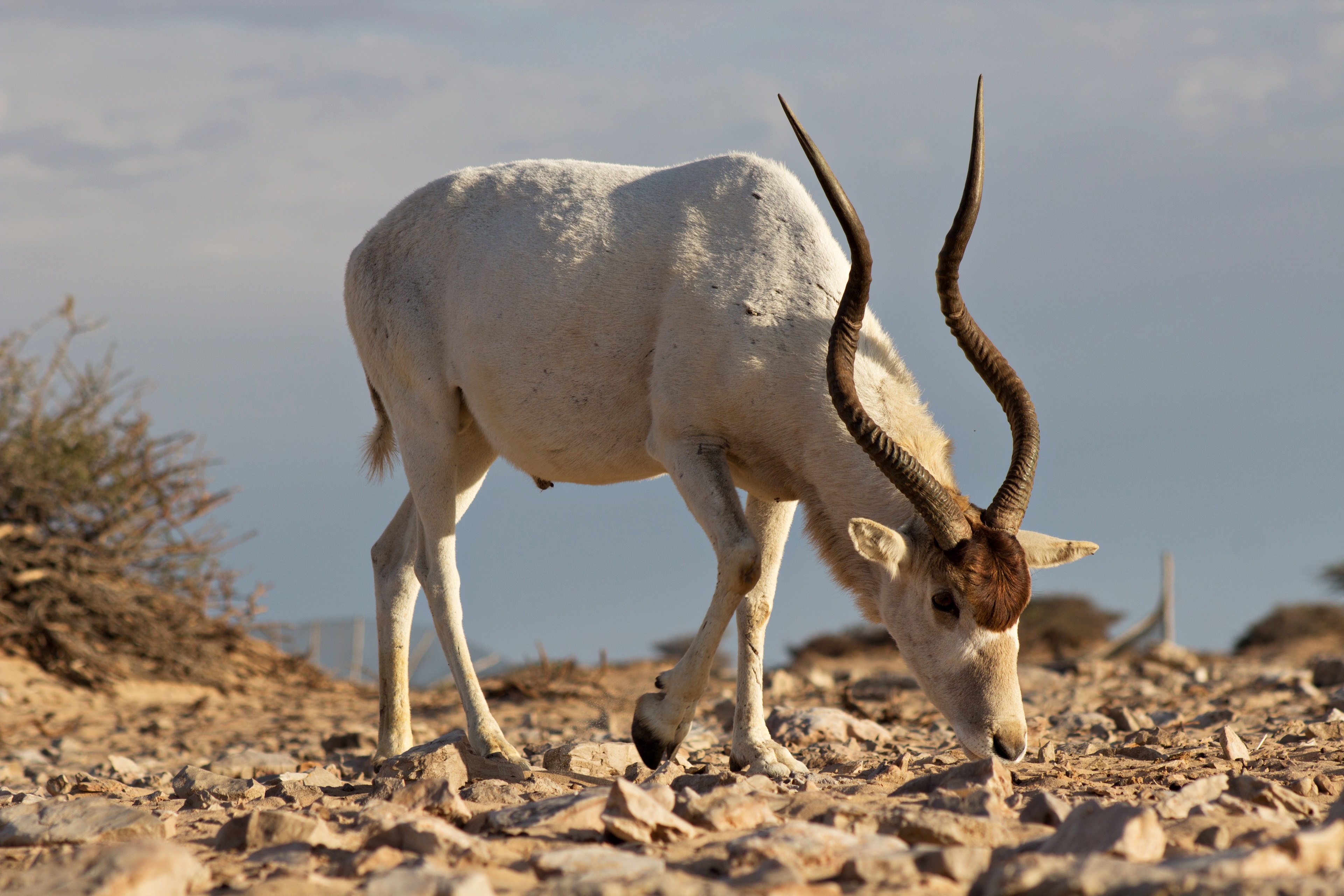
Addax. Image credit: Creative Commons
The region is well vegetated compared to much of northern Arabia, harbouring several relict and endemic species and forming distinct zones according to elevation and aspect. In the foothills, Haloxylon salicornicum is the dominant species, often associated with Zilla spinosa and Astragalus sieberi. Acacia spp. is found from wadi beds up to the highest slopes, often alongside sumac (Searsia tripartita) trees which are a characteristic species of the ecoregion.
On Jabal Aja, intermontane plains at around 1,100 m and above support abundant vegetation including date palms, Trigonella stellate, and several grasses, with a spectacular covering of annuals such as Anthemis pseudocotula and Aaronsohnia factorovskyi following the spring rains. Springs and streambeds sustain clusters of Punjab fig trees and maidenhair ferns, and on the botanically rich northwest-facing slopes where red sands of the Nafud settle around shaded rocks, marigolds, mouse garlic, and Noaea mucronata are some of the many species to be found.
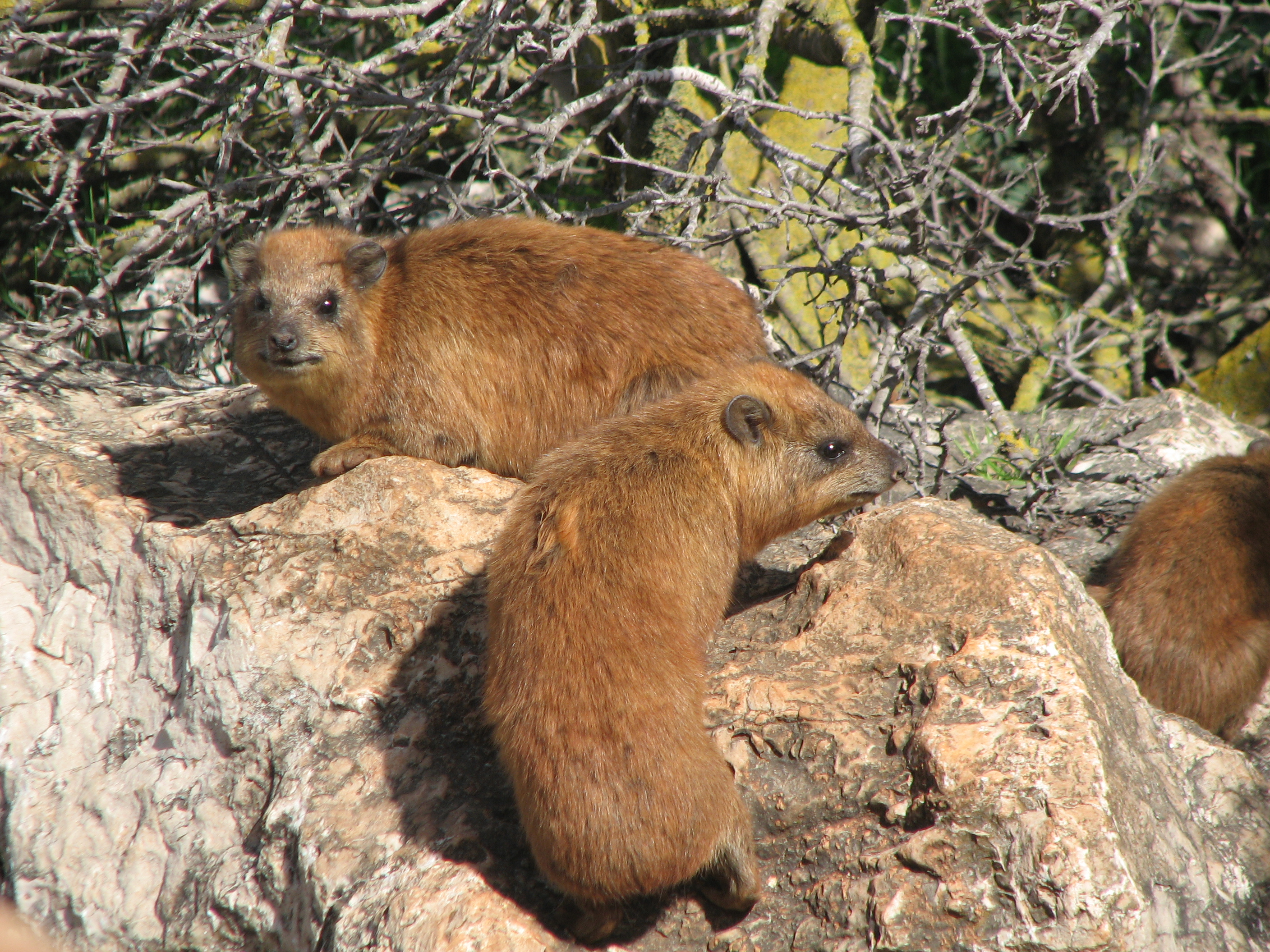
Rock Hyrax. Image credit: Creative Commons
Mammal species known in the region include ratels, rock hyrax, caracal, wolves, and Ruppell’s fox, with Nubian ibex, striped hyena, and sand cats also reported around the mountains. Although there is little avian endemism, Jebel Aja is listed as an Important Bird Area and regularly hosts the griffon vulture and endangered saker falcon and Egyptian vulture. The area also lies at the center of the spring flyway for demoiselle crane and several raptors species, with huge flocks of swifts, larks and wheatears also passing overhead. Plant species endemic to the region include Trisetaria chaudharyana, and Jebel Aja is the only locality for Petrorhagia cretica and Valerianella sclerocarpa in Arabia.
The mountain ranges are a popular recreational site for residents of the nearby city of Ha’il, and contain several sites of archaeological interest. Although palm groves on the intermontane plains are now largely abandoned, the meadows are still used to graze herds of goats, sheep and camels, and farming is carried out in some of the wadis where moisture availability is higher. No areas are currently under any formal protection, though Saudi Arabia’s National Commission for Wildlife Conservation and Development has proposed that Jabal Aja be designated as the country’s first Biosphere Reserve as a recognition of the area’s uniqueness and status as a natural seed bank.
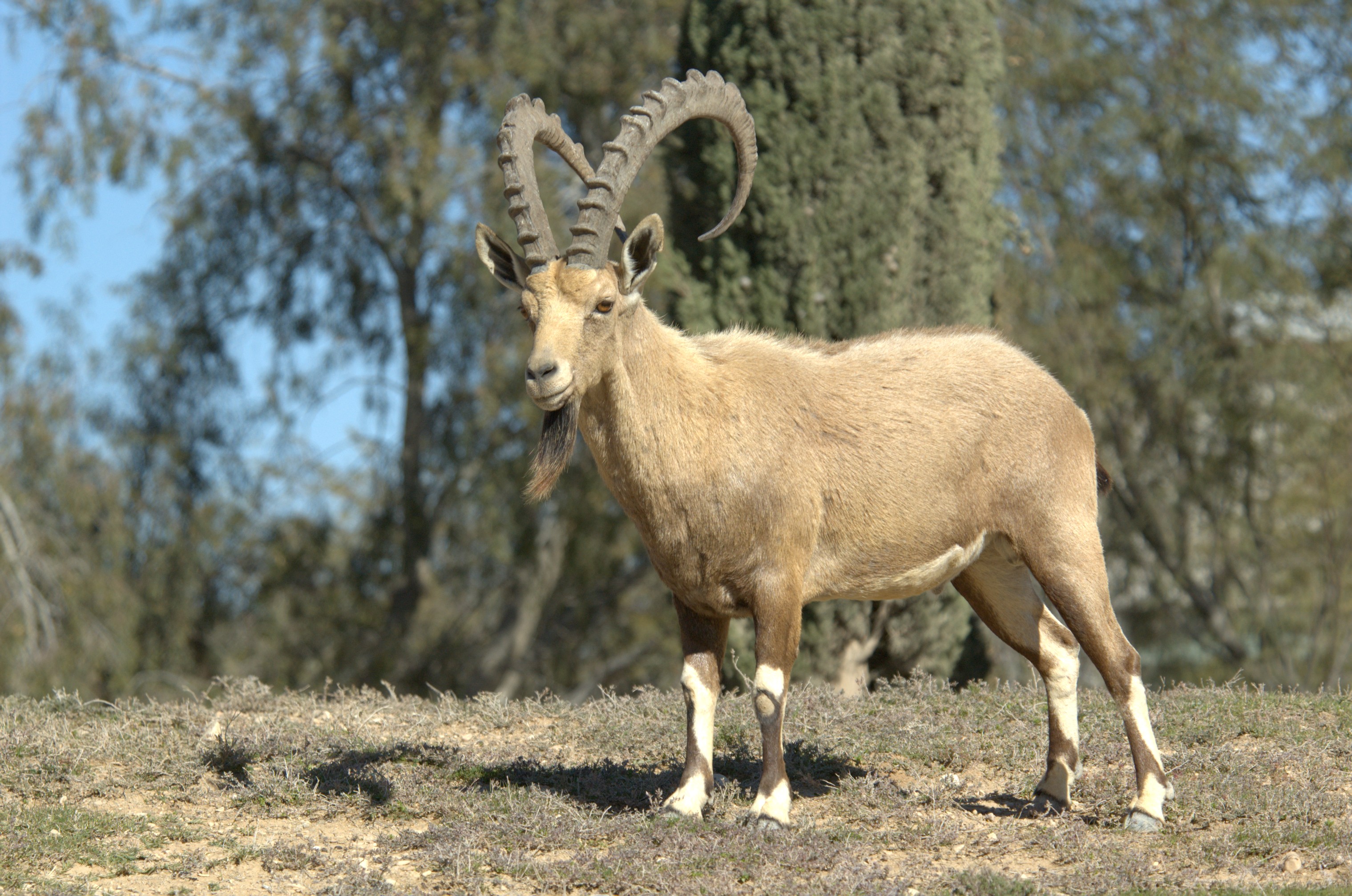
Nubian ibex. Image credit: Creative Commons
Urban expansion, mining, off-road driving, and degradation in popular recreation sites are all major threats facing the region. Overgrazing and cutting of trees has led to significant reductions in vegetation, and an increase in farming activities around wadis is putting an enormous and unsustainable pressure on groundwater supplies. Promoting nature-based tourism in the region has been suggested as an incentive for conservation actions given the economic benefits it would bring to local communities.
The priority conservation actions for the next decade will be to: 1) improve protected area coverage in the region; 2) develop a sustainable tourism and recreational use plan for the area; and 3) investigate the use of Jabal Aja’s seed bank to restore degraded areas both within the ecoregion and surrounding rangelands.
Citations:
- Llewellyn, O. et al. (2011) ‘Important Plant Areas in the Arabian Peninsula: 4. Jabal Aja’. Edinburgh Journal of Botany, 68(2), pp. 199-224. DOI: 10.1017/S0960428611000059
- Alghamdi, A. et al. (2018). ‘Inaccessible Zones of Jabal Salma, Ha’il Region in Saudi Arabia: A reservoir for native seed species’. Journal of Experimental Biology and Agricultural Sciences. 6(3), pp. 572-581. DOI: 10.18006/2018.6(3).572.581
- BirdLife International (2019) ‘Important Bird Areas factsheet: Jabal Aja and Northern Ha'il’. [Online]. Available from http://www.birdlife.org [Accessed 26/08/2019].
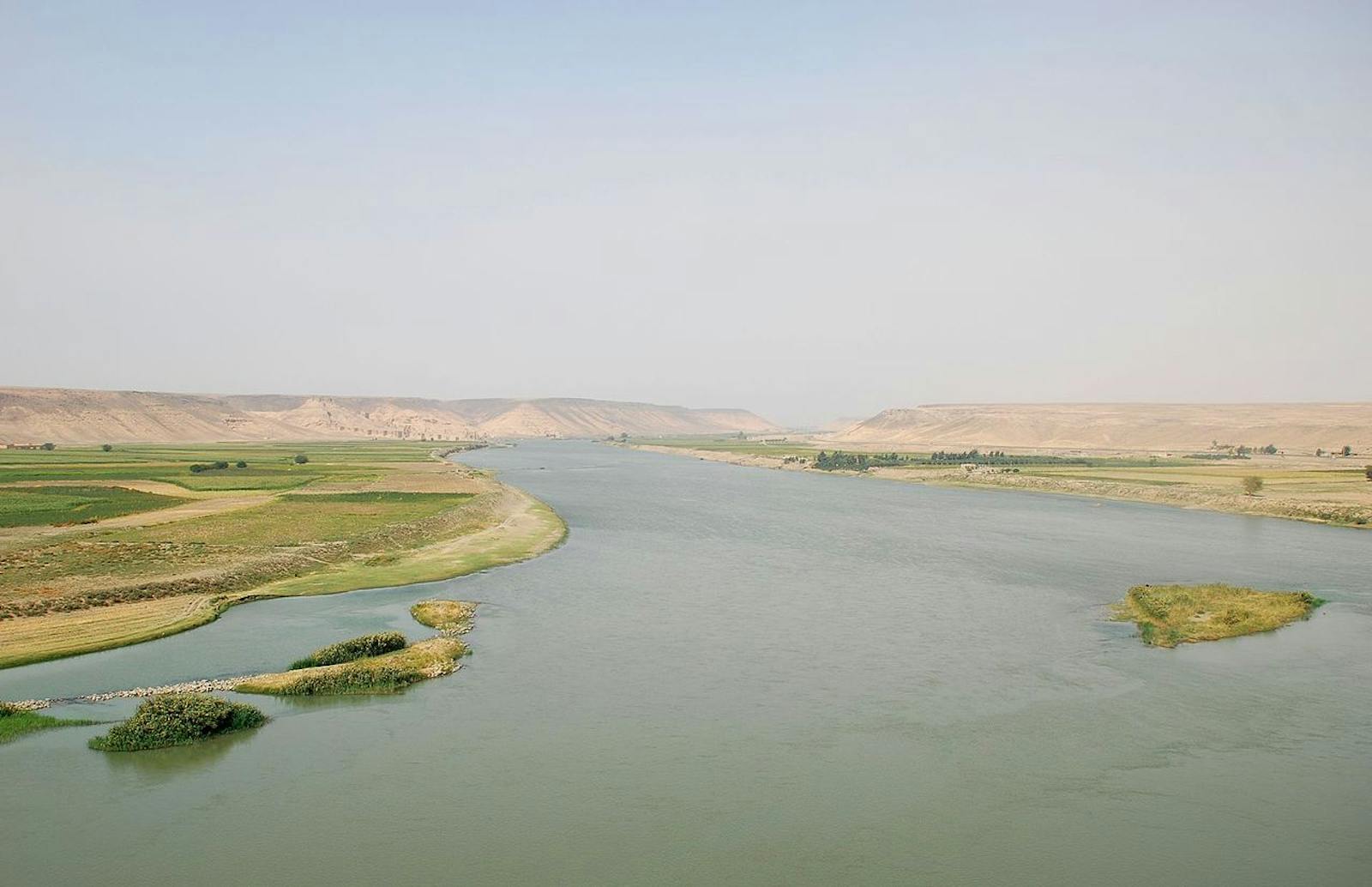
.png?auto=compress%2Cformat&w=300)

